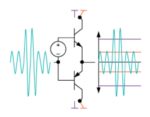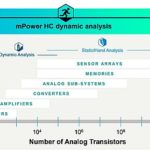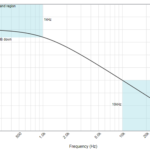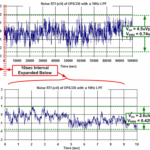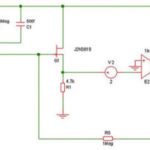Analog design for integrated circuits (ICs) involves creating devices and systems that process continuous signals. Analog plays a crucial role in translating real-world information such as sound, light, and temperature into electrical signals and vice versa. This article discusses the primary differences between analog and digital ICs, reviews key analog applications, and explores common analog […]
Analog ICs
5G mmWave signal chain: the phase-locked loop
In “Look inside the 5G mmWave signal chain,” we explored the overall architecture of the mmWave signal chain. Now, we’ll look deeper into each of a transceiver’s components. Phase-locked Loops (PLL) are important blocks for a clean reference clock generation in cellular networks. In 5G mmWave radio networks, the PLL supports data rates of 1…
Minimizing electrical noise to improve medical-ultrasound images, Part 1
Low-noise circuitry is critical to the image quality of medical ultrasound, an indispensable diagnostic tool. Ultrasound technology, a widely used non-invasive tool in medical diagnostics and other applications, has shifted from static to dynamic images and from black-and-white to color Doppler images. These important enhancements are largely due to the introduction of digital ultrasound technology […]
Advanced mixed-signal simulation platform accelerates verification, boosts productivity
Siemens Digital Industries Software introduces the new Symphony Pro platform. This next-generation solution extends the robust mixed-signal verification capabilities of Siemens’ proven Symphony platform to support new and advanced Accellera standardized verification methodologies with a powerful, comprehensive, and intuitive visual debug cockpit, resulting in productivity improvements of up to 10X compared to legacy solutions. Next-generation […]
Where do you use A, B, AB, D, G, DG and H circuits?
This selection of power amplifier classes is used to strengthen AC signals. The letter symbols differentiate between amplifier types and indicate the expected performance and characteristics. Basic amplifier classes such as A, B, AB, and C relate to the time that the amplifier is operating, or conducting, expressed as a fraction of the period of […]
Software runs power integrity analysis for analog, digital, mixed-signal IC designs of any size
The new mPower power integrity software for analog, digital and mixed signal IC designs is the industry’s first and only IC power integrity verification solution to provide virtually unlimited scalability for analog, digital, and mixed signal ICs, enabling comprehensive power, electromigration (EM) and voltage drop (IR) analysis for even the largest IC designs. mPower software […]
The practical magical first-order analog filter: Part 1
Finding the right analog filter to build a sensor circuit doesn’t have to be complicated. Understandably, the plethora of filter options can be overwhelming. Also, selecting a less-than-ideal filter may result in compromises, potentially increasing system cost, or affecting performance. To help simplify filter selection, this series of blogs explore key considerations when assessing your […]
Including the often overlooked 1/f current noise
It is tempting to center your attention only on voltage noise when using operational amplifiers in the circuit. This impulse is attractive because the current noise is always well below the voltage noise specifications. But be careful. Don’t jump to conclusions without looking at all the elements in this noise challenge. This blog explores the […]
Negotiate through 1/f noise challenges towards sample sizes into the 100s of years
Measuring and determining 1/f voltage noise over a multiple-year sample requires an operational amplifier and effective 1/f knowledge. This article shows how to identify and determine the actual op amp 1/f voltage noise across a sample size of years and explains why the 1/f voltage noise is a non-issue at higher frequencies. After many years […]
Improving transimpedance amplifiers with a bootstrap
Analog bootstrap circuits are traditionally ones where output is fed back to the input, usually to increase input impedance. This can be to minimize either the resistive or reactive (usually capacitive) components of the input impedance or both. The term is now also used with MOSFET drivers where a capacitor is charged and used to […]





